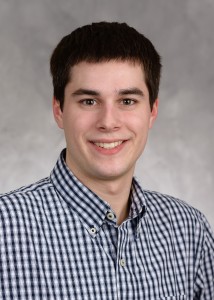SOMERS – When web visitors access www.somers.org they find a well-designed, easy-to-navigate site that conveys important information about the town of Somers, a community of more than 10,000 residents in the southeast corner of Wisconsin, and home to the University of Wisconsin-Parkside.
Not long ago, those same visitors may have been challenged to find information and the information they did find was not always up to date. What happened?
“Ten years ago, smaller towns did not view the internet as a primary communication tool,” said Jackie Nelson, town of Somers resident and a driving force behind the new site. “Today, residents of our community, those who may be interested in becoming residents, and our partners from business and industry depend on the web for current, accurate information.”
Nelson was invited to be a member of the town of Somers incorporation study committee in 2010. As the owner of an ecommerce business, she quickly recognized that the design and navigation limitations of the existing site prevented an easy and effective way of communicating with residents.
“I met with town of Somers officials to discuss the needs and benefits of an updated site,” Nelson said. “I proposed several options, however, funding and technical expertise were the primary challenges.”
Enter the University of Wisconsin-Parkside. A conversation with Chancellor Debbie Ford opened the door to a potential partnership with management information systems (MIS) students from Professor Stephen Hawk’s Information Technology Foundations class.
The original class assignment started with groups of students reviewing various websites. David Sieraski was part a team that focused on the Somers site.
Somers administrators were well aware that UW-Parkside students were reviewing and critiquing their website. “With the help of Jackie and Tom Nelson, we approached Professor Hawk to find out if students would be able to help us construct a new site,” said Ben Harbach, chair of the Somers Town Board.
The following year, Hawk gave David Sieraski and Yuniwo Nfor the opportunity to continue working with Somers as part of an independent study. While all this was transpiring, Nelson had been developing her own ideas for the site.
“Early in 2013, I presented a proposal to the town board for updating the website,” Nelson said. “I defined the goal as: ‘The town of Somers wishes to pursue a better relationship with residents and its reputation with families and businesses that are considering Somers as a location to settle.’ The board accepted my proposal and I was soon introduced to David Sieraski. The two of us began to work together building a brand new site.”
Nelson and Sieraski based the design on best practices from a variety of other municipal websites. “Then we came up with our own design,” Sieraski said. “For the most part, it is everything that the town of Somers wants right now and Jackie is keeping the content up to date. If they have technical questions they contact me.”
The new site was launched in November 2013. An important and cost-effective decision was selecting an open-source content management system (CMS) from Drupal.

University of Wisconsin-Parkside alumnus David Sieraski worked on a project rebuilding the Town of Sommers website while a student.
“Because the CMS is open source, we can manipulate it the way we want it to work,” Sieraski said.
The idea was to find a CMS so that Nelson, or anyone else working with the site, could quickly and accurately update information. A CMS allows changes to be made in a manner that more resembles a text file on the actual page rather than working with computer code. Platinum Systems, a provider of computer hardware and software located in Somers, hosted the original Somers site and built the content management system. According to Platinum Systems President Matt Carlson, the company will continue to host the new site at no charge as a donation to the community.
In addition to the site being hosted at no charge, using an open source CMS from Drupal saved the town additional resources. “It allows Jackie to do what she does and I’m in their back pocket using my resources whenever they have a technical question,” Sieraski said.
Professor Hawk was confident that Sieraski would deliver a quality product. “The scope and the professional quality of the result are somewhat unusual for a student project,” Hawk said. “However, David’s technical ability and initiative are amazing.”
For Sieraski, who now works for InPro Corporation in Muskego, Wis., as a .net developer, it was his first website project working with a municipality or nonprofit organization.
“The most challenging part was getting the right resources from the right people,” he said. “Working with different people, I had to understand how they work and incorporate that into my schedule.
“I found that the way I might understand something could be way different than how another person understands the same concept. Everyone has an opinion, and everyone has a way they think the website should be designed. But when it comes down to it, you have to look at best practices for websites and look at how the majority of municipal and government websites are set up.”
Nelson values the importance of collaboration between the technical web developer and the creative manager. “Each brings different skills to the project,” she said. “A fabulous website is the result of technology and creative design coming together in harmony. The town of Somers is the beneficiary of the synergy David and I brought to the project.”
